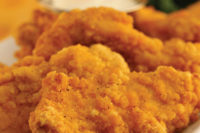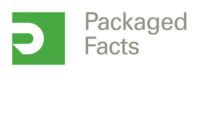Silver Nitrate/Hydrogen Peroxide Solution Okay as a Food Additive
March 18/Washington/Food and Drug Adminstration Documents and Publications -- The Food and Drug Administration (FDA) is amending the food additive regulations to provide for the safe use of an aqueous solution of silver nitrate and hydrogen peroxide as an antimicrobial agent in bottled water. This action is in response to a petition filed by Kareem I. Batarseh.
This final rule is effective March 18, 2009. Submit written or electronic objections and requests for a hearing by April 17, 2009. See section VIII of this document for information on the filing of objections. The director of the Federal Register approves the incorporation by reference in accordance with 5 U.S.C. 552(a) and 1 CFR part 51 of certain publications in 21 CFR 172.167 as of March 18, 2009.
Written or electronic objections and requests for a hearing identified by Docket No. FDA-2005-F-0505 (formerly Docket No. 2005F-0138) may be submitted by any of the following methods:
Electronic Submissions:
* Federal eRulemaking Portal: http://www.regulations.gov. Follow the instructions for submitting comments.
Written Submissions
* FAX: 301-827-6870.
* Mail/Hand delivery/Courier [for paper, disk, or CD-ROM submissions]: Division of Dockets Management (HFA-305), Food and Drug Administration, 5630 Fishers Lane, rm. 1061, Rockville, MD 20852.
To ensure more timely processing of objections, FDA is no longer accepting objections submitted to the agency by e-mail. FDA encourages you to continue to submit electronic objections by using the Federal eRulemaking Portal, as described in the Electronic Submissions portion of this paragraph.
All submissions received must include the agency name and docket number for this rulemaking. All objections received will be posted without change to http://www.regulations.gov, including any personal information provided. For detailed instructions on submitting objections, see the "Objections" heading of the SUPPLEMENTARY INFORMATION section.
For access to the docket to read background documents or objections received, go to http://www.regulations.gov and insert the docket number(s) into the "Search" box and follow the prompts and/or go to the Division of Dockets Management, 5630 Fishers Lane, rm. 1061, Rockville, MD 20852.
FOR FURTHER INFORMATION CONTACT: Mical E. Honigfort, Center for Food Safety and Applied Nutrition (HFS-265), Food and Drug Administration, 5100 Paint Branch Pkwy., College Park, MD 20740-3835, 301-436-1278.
SUPPLEMENTARY INFORMATION: In a notice published in the Federal Register of April 18, 2005 (70 FR 20145), FDA announced that a food additive petition (FAP 5A4759) had been filed by Kareem I. Batarseh, P.O. Box 8, College Park, MD 20741-0008. The petition proposed to amend the food additive regulations in part 172, Food Additives Permitted for Direct Addition to Food for Human Consumption (21 CFR part 172), to provide for the safe use of an aqueous solution of silver nitrate and hydrogen peroxide as an antimicrobial agent in bottled drinking water at a level not to exceed 17 micrograms per kilogram ([micro]g/kg) of silver and 23 milligrams per kilogram (mg/kg) of hydrogen peroxide in the treated bottled water.
II. Evaluation of Safety
Under the general safety standard in section 409 of the Federal Food, Drug, and Cosmetic Act (the act) (21 U.S.C. 348), a food additive cannot be approved for a particular use unless a fair evaluation of the data available to FDA establishes that the additive is safe for that use. FDA's food additive regulations (21 CFR 170.3(i)) define safe as "a reasonable certainty in the minds of competent scientists that the substance is not harmful under the intended conditions of use."
To establish with reasonable certainty that a food additive is not harmful under its intended conditions of use, FDA considers the estimated human dietary intake of the additive, the additive's toxicological data, and other relevant information (such as published literature) available to the agency. FDA compares an individual's estimated daily intake (EDI) of the additive to an acceptable intake level established by toxicological data. The EDI is determined by projections based on the amount of the additive proposed for use in particular foods and on data regarding the amount consumed from all sources of the additive. The agency commonly uses the EDI for the 90th percentile consumer of a food additive as a measure of high chronic dietary intake.
FDA estimates the EDI of silver from the petitioned use in bottled water to be 26 micrograms per person per day ([micro]g/p/d) for the 90th percentile consumer aged 2 years or more (Ref. 1). Currently, silver is permitted as a component of an antimicrobial agent in water filters (the subject of effective food contact substance notification number 351 (Ref. 2)). The EDI from this filter use is 27 [micro]g/p/d for the 90th percentile consumer. The petitioner has proposed as a condition of safe use that the subject additive not be used in bottled water that has been or is intended to be filtered with a silver-containing water filter. Consequently, bottled water containing the subject additive will generally be consumed as a substitute for, rather than in addition to, bottled water that has been filtered with a silver-containing filter. Thus, the use of the subject additive in bottled water will not increase consumer exposure to silver. Because there is no increase in the intake of silver beyond a level that has already been established as safe, FDA has no concerns regarding the petitioned use of silver as a component of this additive.
Regarding exposure to nitrate from use of the subject additive, FDA estimates that the maximum level of nitrate in bottled drinking water treated with the subject additive would result in a worst-case intake of 15 [micro]g/p/d at the 90th percentile (Ref. 1), which is equivalent to 0.25 micrograms per kilogram body weight per day ([micro]g/kg-bw/d) in a 60 kg adult. FDA has no safety concerns because the intake of nitrate in bottled drinking water treated with the subject additive is significantly lower than the chronic oral reference dose of 1,600 [micro]g/kg-bw/d for nitrate that was established by the Environmental Protection Agency (Ref. 3).
FDA also has no safety concerns regarding the use of hydrogen peroxide as a component of this additive as it will rapidly break down to water and oxygen after addition to the bottled water. Consequently, the dietary exposure to hydrogen peroxide from the petitioned use of the subject additive is essentially zero (Ref. 1).
III. Conclusion
FDA reviewed data in the petition and other available relevant material to evaluate the safety of the use of a mixture of silver nitrate and hydrogen peroxide as an antimicrobial agent in bottled water. Based on this information, the agency concludes that the proposed use of the additive is safe and the additive will achieve its intended technical effect as an antimicrobial agent under the proposed conditions of use. Therefore, the regulations in part 172 should be amended as set forth in this document.
To ensure that food grade hydrogen peroxide is used in food, the additive must meet the specifications for hydrogen peroxide set forth in this regulation.
FDA notes that bottled water must meet the quality standards for bottled water in SEC 165.110(b)(2) through (b)(5) (21 CFR 165.110(b)(2) through (b)(5)), including the limits specified for total silver and nitrate, unless the water bears a label statement of substandard quality, as provided for under SEC 165.110(c) (21 CFR 165.110(c)). Furthermore, bottled water containing a substance at a level considered injurious to health under section 402(a)(1) of the act (21 U.S.C. 342(a)(1)) is deemed adulterated, regardless of whether or not the water bears a label statement of substandard quality, SEC 165.110(d) (21 CFR 165.110(d)).
IV. Public Disclosure
In accordance with SEC 171.1(h) (21 CFR 171.1(h)), the petition and the documents that FDA considered and relied upon in reaching its decision to approve the petition will be made available for inspection at the Center for Food Safety and Applied Nutrition by appointment with the information contact person (see FOR FURTHER INFORMATION CONTACT). As provided in SEC 171.1(h), the agency will delete from the documents any materials that are not available for public disclosure before making the documents available for inspection.
V. Environmental Impact
The agency has previously considered the environmental effects of this rule as announced in the notice of filing for FAP 5A4759. No new information or comments have been received that would affect the agency's previous determination that there is no significant impact on the human environment and that an environmental impact statement is not required.
VI. Paperwork Reduction Act of 1995
This final rule contains no collection of information. Therefore, clearance by the Office of Management and Budget under the Paperwork Reduction Act of 1995 is not required.
VII. Section 301(ll) of the Federal Food, Drug, and Cosmetic Act
FDA's review of this petition was limited to section 409 of the act. This final rule is not a statement regarding compliance with other sections of the act. For example, the Food and Drug Administration Amendments Act of 2007, which was signed into law on September 27, 2007, amended the act to, among other things, add section 301(ll) (21 U.S.C. 301(ll)). Section 301(ll) of the act prohibits the introduction or delivery for introduction into interstate commerce of any food that contains a drug approved under section 505 of the act (21 U.S.C. 355), a biological product licensed under section 351 of the Public Health Service Act (42 U.S.C. 262), or a drug or biological product for which substantial clinical investigations have been instituted and their existence has been made public, unless one of the exceptions in 21 U.S.C. 301(ll)(1) to (ll)(4) applies. In our review of this petition, FDA did not consider whether section 301(ll) or any of its exemptions apply to food containing this additive. Accordingly, this final rule should not be construed to be a statement that a food containing this additive, if introduced or delivered for introduction into interstate commerce, would not violate section 301(ll). Furthermore, this language is included in all food additive final rules and therefore should not be construed to be a statement of the likelihood that section 301(ll) applies.
From the March 30, 2009, Prepared Foods E-dition
Looking for a reprint of this article?
From high-res PDFs to custom plaques, order your copy today!





